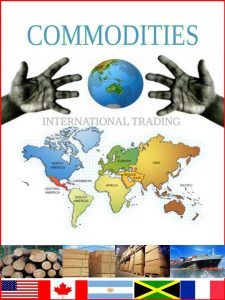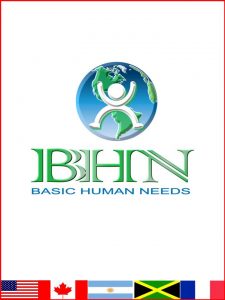Speaking to Virginia Robertson the other day on things I learned from her book – a gift – which is a marvelous expose, illuminating the historical journey of value through the ages. It was in those pages that I stumbled upon the forgotten chapters of the barter economy, a system that once thrived on the principle of fair exchange. The merits of such a system echoed through time, reminding me of the inherent value in direct trade and mutual benefit.
As I delved deeper into the annals of history, my conviction grew stronger. The Great Depression of 1929–1939, an era marred by economic turmoil, stood as a stark testament to the fragility of our existing monetary systems. Value was lost, and communities were left grappling with the aftermath.
The echoes of the past resounded in the Great Recession of 2007–2009, a chilling reminder that the cycles of value destruction were not confined to history. Our traditional money system, though resilient, bore the weight of its flaws.
And so, I found myself at a crossroads, standing at the precipice of an idea that had been germinating within me. It was time to make the switch, to forge a new path towards preserving value and ensuring fairness in exchange. The concept of an Information Currency began to take shape—a system rooted in transparency, real-time data, and a universal standard of value.
Still not sure why this should even be worthy of discourse – this piece will address that succinctly.

What is Traditional Inventory Management:
Traditional inventory management relies on established systems and processes for tracking, ordering, and managing stock levels. It typically involves manual record-keeping, periodic physical audits, and predetermined reorder points to replenish inventory. Businesses often rely on periodic assessments to gauge their stock levels. This process typically involves manual audits and batch processing, where inventory data is collected at specific intervals. While this approach has been a staple in supply chain management, it comes with inherent limitations, particularly in providing up-to-the-minute visibility into inventory status.
Manual audits, though thorough, are labor-intensive and time-consuming. They require dedicated resources to count and record inventory physically. This process, by its very nature, introduces a temporal gap between when the data is collected and when it becomes available for decision-making. In today’s fast-paced business environment, this delay can result in missed opportunities or inadequate responses to rapidly changing market conditions.
Moreover, batch processing, which involves consolidating and processing data in groups, means that updates to inventory levels occur at specific intervals, rather than in real-time. This further exacerbates the challenge of obtaining immediate, accurate information about the current state of inventory. In a globalized market where dynamics can shift instantly, this information delay can be a significant impediment to agile decision-making. While effective in its own right, this approach can be labor-intensive, time-consuming, and may not provide real-time insights.
Unveiling Information Currency’s Core Function:
At the heart of Itembanc’s innovative approach lies the proposition to revolutionize how we interpret value on a global scale. This is achieved through the ingenious utilization of a core set of “basic human needs” (BHN), encompassing vital categories such as food, shelter, basic clothing, paper products, and essential hygiene/medical items. These items are not only indispensable for survival but are also characterized by their longevity, ensuring their enduring value in markets worldwide.
The value baseline of BHN (a term propounded by itembanc) serves as a foundation for establishing relative value, free from the influence of manipulated state currencies. It signifies a shift in how markets communicate value, setting a precedent for future interactions.

Key Comparative Points:
- Real-Time Visibility and Global Interpretation of Value:
Traditional Inventory Management often hinges on periodic assessments of inventory levels, accomplished through manual audits and batch processing. This process may introduce a lag between actual inventory status and recorded data, potentially impeding timely decision-making.
In striking contrast, Information Currency delivers a real-time, granular view of inventory levels, enabling instant decision-making and responsiveness to market dynamics. With itembanc, this is facilitated by the utilization of BHN as a universal standard of value. It transcends the limitations of traditional methods by seamlessly interpreting value across diverse goods, locations, and currencies.
- Accuracy, Transparency, and Universal Standard of Value:
Traditional Inventory Management may occasionally be susceptible to human error, discrepancies, and delayed updates. The reliance on manual processes can introduce inconsistencies between recorded and actual inventory levels. Moreover, without a clear audit trail, transparency may be compromised.
On the other hand, Itembanc addresses these challenges head-on:
Tokenizing Business Inventories
- Baseline Identification of Basic Human Needs (BHN): The first step in leveraging Itembanc’s platform is identifying and categorizing the core set of BHN that define the value baseline. These encompass vital categories such as food, shelter, basic clothing, paper products, and essential hygiene/medical items. This distinctive selection serves as the bedrock for interpreting value.
- Quantifying Services and Inventories: With the BHN baseline established, businesses proceed to quantify their inventories and services in a standardized pattern. This step ensures that all assets are represented uniformly, enabling seamless comparison and valuation in the market.
- Integration with Itembanc’s Platform: Itembanc provides an intuitive interface for businesses to integrate their inventories onto the platform. This process involves uploading relevant data, which is then tokenized and recorded on the blockchain ledger.
This level of transparency builds confidence in the accuracy of inventory data, strengthening relationships with stakeholders across the supply chain.
- Market-Driven Valuation and Economic Principles:
In traditional inventory management, the valuation of items is often determined by predetermined cost and markup formulas. While this provides a baseline for pricing, it may not accurately reflect the dynamic nature of the market. Fluctuating demand, changing consumer preferences, and evolving market trends can lead to situations of overstocking or understocking.
Itembanc, on the other hand, introduces a paradigm shift by utilizing market data and demand trends to dynamically adjust item values. This aligns the value of goods with actual market conditions. This approach is rooted in economic principles such as the Law of One Price and Purchasing Power Parity theory, ensuring a comparable valuation of goods traded in global markets.
Conclusion:
By leveraging a core set of BHN as a universal standard of value, Itembanc offers not only real-time visibility and accuracy but also market-driven valuation and enhanced efficiency. As businesses navigate an increasingly dynamic market landscape, Information Currency emerges as a powerful tool for unlocking new levels of operational excellence and strategic advantage.
